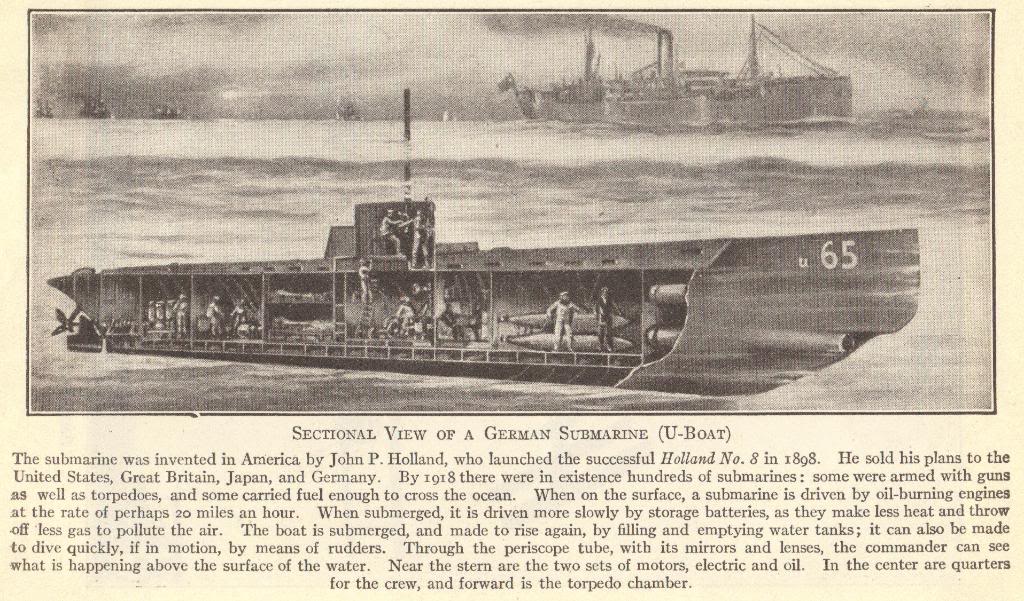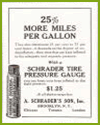Sectional view of a German submarine (U-boat).
The modern military submarine was invented in the United States of America by John P. Holland, who launched the successful Holland No. 8 in 1898 (the very first was the Turtle in 1775, built by American David Bushnell). He sold his plans to the United States, Great Britain, Japan, and Germany. By 1918, there were in existence hundreds of submarines: some were armed with guns as well as torpedoes, and some carried fuel enough to cross the ocean.
When on the surface, a World War I submarine was driven by oil-burning engines at the rate of perhaps 20 miles an hour. When submerged, it was driven more slowly by storage batteries, as they make less heat and throw off less gas to pollute the air. The boat was submerged, and made to rise again, by filling and emptying water tanks; it could also be made to dive quickly, if in motion, by means of rudders. Through the periscope tube, with its mirrors and lenses, the commander could see what was happening above the surface of the water. Near the stern were the two sets of motors, electric and oil. In the center were quarters for the crew, and forward was the torpedo chamber.
|















